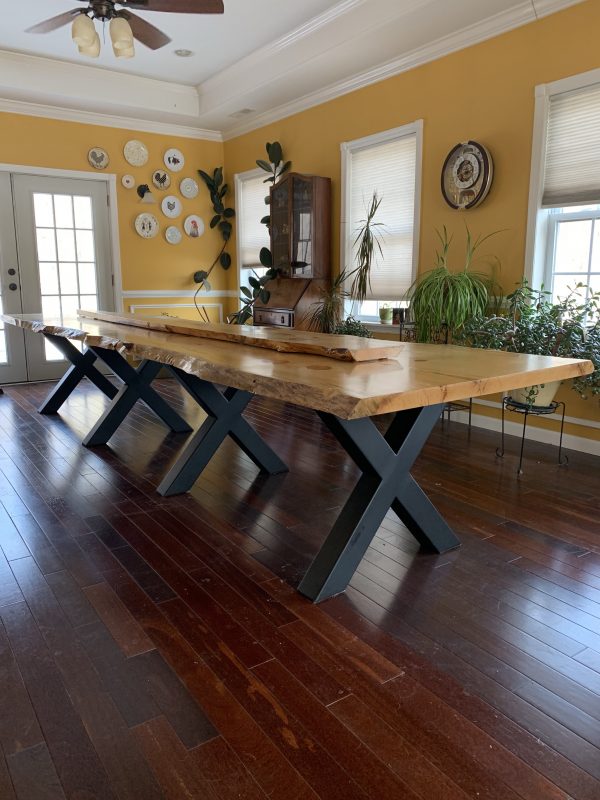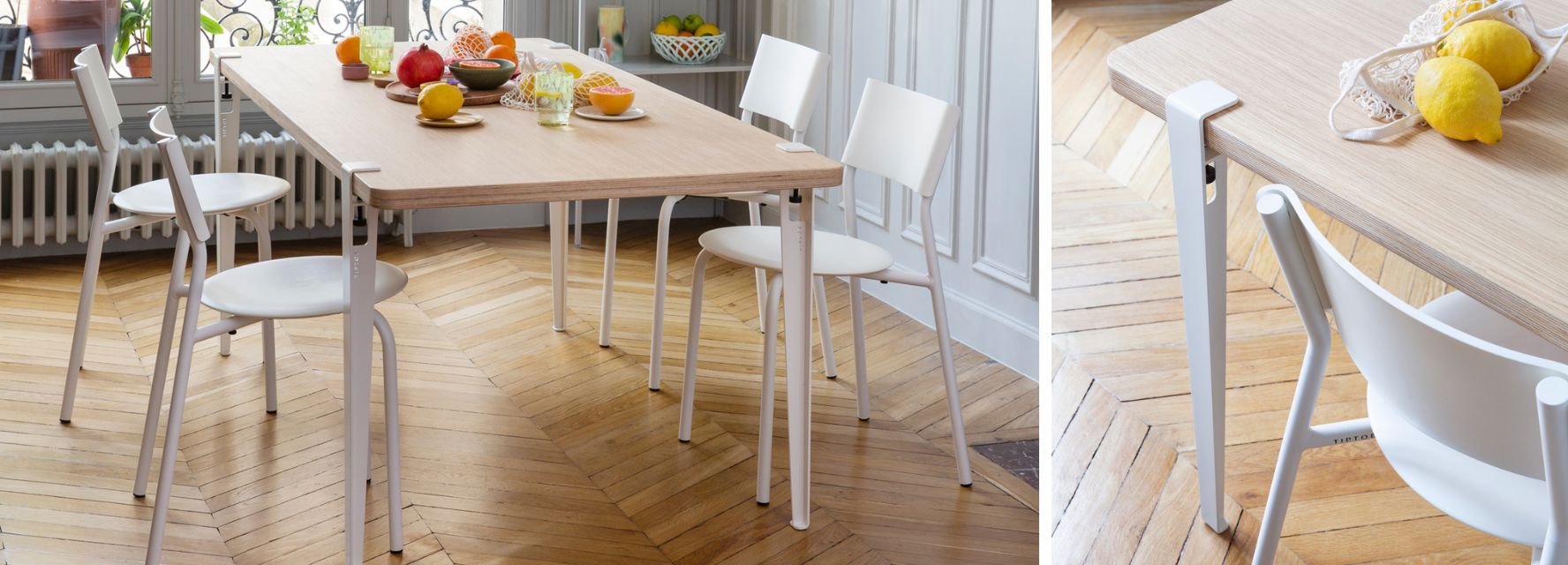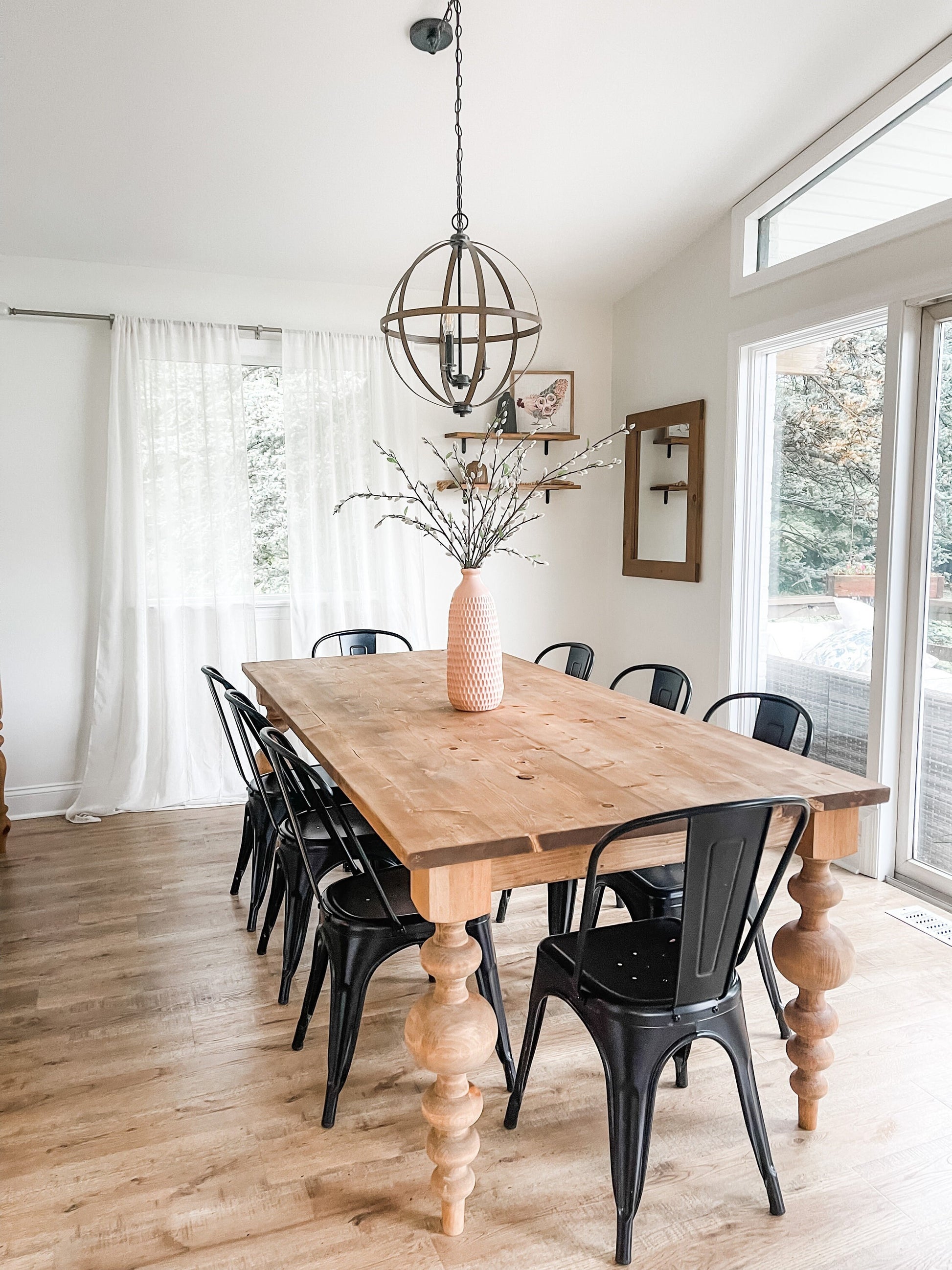Unique Dining Room Table Legs That Will Elevate Your Dining Area
Unique Dining Room Table Legs That Will Elevate Your Dining Area
Blog Article
Just How to Select the Perfect Dining Room Table Legs for Your Home Design
Choosing the excellent dining space table legs is a nuanced procedure that needs mindful consideration of different elements, including your space restraints, visual choices, and practical requirements. The interaction between dimensions, styles, and materials can considerably affect the setting of your eating location, making it vital to approach this choice methodically. As you consider the myriad options available, it becomes clear that the ideal selection expands past simple appearance; it can enhance your overall dining experience. What elements should you focus on to guarantee your selection matches your home's unique character?
Assess Your Eating Room
Analyzing your dining area is essential for selecting the right table legs that match both appearances and functionality. Begin by gauging the dimensions of your dining location, consisting of ceiling height, floor space, and closeness to various other furniture. This details will assist identify the appropriate dimension and height of your table, which directly influences the choice of table legs.
Following, consider the style and design of your eating room. For example, an open-concept style might profit from table legs that offer aesthetic lightness, such as slim steel or acrylic choices. Alternatively, a much more standard setup could require durable wooden legs that provide a feeling of durability.
Examine the existing color scheme and materials in your dining area. Integrating the table legs with these components produces a cohesive appearance that enhances the total style.
Ultimately, a detailed analysis of your dining space will certainly lead you in making a notified choice, ensuring that your table legs not only improve the visual charm but also offer practical functions.
Consider Your Design Preferences
When selecting dining-room table legs, it is necessary to assess your personal design preferences, as they substantially affect the overall aesthetic of your dining space. Your option of table legs can either enhance or comparison with existing decor, making it critical to straighten them with your preferred interior layout theme.
If your home leans in the direction of a modern-day aesthetic, consider smooth steel or minimalist wood legs that offer a clean, minimalist appearance. For a much more typical method, elaborate wooden legs with intricate carvings can add a touch of elegance and elegance. Industrial designs take advantage of durable, raw products such as redeemed timber and metal mixes, showing a sturdy beauty.
Additionally, farmhouse and rustic styles typically prefer sturdy, beefy legs that stimulate a sense of heat and convenience. On the other hand, if your décor is diverse, you might choose unusual forms or a mix of products to create aesthetic rate of interest.

Evaluate Material Options
The choice of material for dining area table legs plays a pivotal role in both sturdiness and aesthetic allure. Usual materials include wood, metal, and composite options, each offering unique features that can affect the overall appearance and longevity of your table.
Wood is a classic option, understood for its warmth and convenience. Hardwoods like oak and walnut give extraordinary stamina and can be ended up in numerous discolorations to match any kind of style. Softwoods like pine are more vulnerable to damages and scratches, making them much less excellent for high-traffic locations.
Steel legs, often crafted from steel or aluminum, exude modernity and commercial beauty. They are resistant and highly durable to put on, look at this site making them ideal for households with children or constant celebrations (dining room table legs). In addition, steel can be completed in numerous colors, boosting the customization view it now possibilities
Composite products, such as MDF or laminate, deal affordability and varied styles. While usually less long lasting than solid wood or steel, they can still offer a stylish look and are typically easy to maintain.
Eventually, the material you choose need to line up with your lifestyle, visual choices, and the degree of use your eating table will experience.
Determine Elevation and Size
Picking the suitable height and dimension for your dining area table is necessary for both functionality and convenience. The basic elevation for eating tables generally varies from 28 to 30 inches, allowing enough legroom for many people when seated. However, it is crucial to think about the dimensions of your dining room and the types of chairs you prepare to make use of.

Furthermore, consider the proportions of your dining space. A larger table in a large location can produce a grand atmosphere, while a smaller sized table functions well in more intimate settings. Ultimately, the best height and size will harmonize with your overall decor and improve the dining experience for you and your visitors.
Explore Personalization Opportunities

Additionally, the design of the legs can be tailored to fit different styles, such as rustic, modern-day, or commercial. Conical legs can evoke a mid-century contemporary feel, while beefy, block-style legs may reverberate with conventional or farmhouse style.
House owners can likewise explore shade finishes, from all-natural timber spots to repaint, enabling them to match or comparison with the tabletop and bordering design.
In addition, leg height can be readjusted to fit details seating plans or individual preferences, boosting both comfort and capability.
Lastly, special embellishments, such as carvings or attractive brackets, can even more individualize the table legs, making the eating experience not simply a dish but a statement piece in the home. By taking into consideration these personalization options, house owners can develop a dining space table that absolutely reflects their uniqueness.
Verdict
Selecting the optimal eating area table legs needs careful consideration of different variables, consisting of the dimensions of the dining area, design preferences, material longevity, and desired height. Personalization choices better boost the ability to achieve a cohesive visual that matches the total style. By methodically evaluating these elements, property owners can guarantee that the selected table legs not just meet useful needs yet additionally add favorably to the eating experience and atmosphere of the home.
Choosing the suitable eating area table legs is a nuanced process that needs cautious factor to consider of numerous components, including your room restraints, visual choices, and practical needs.Assessing your eating room is crucial for picking the right table legs that enhance both aesthetic appeals and functionality.When figuring out size, measure the area where the table will be placed to ensure it fits pleasantly, permitting for at the very least 36 inches of clearance around the table for easy movement. A bigger table in a large area can create a grand setting, while a smaller sized table functions well in more intimate setups.Picking the suitable dining room table legs calls for cautious consideration of various variables, including the dimensions of the eating space, design preferences, product longevity, and preferred height.
Report this page